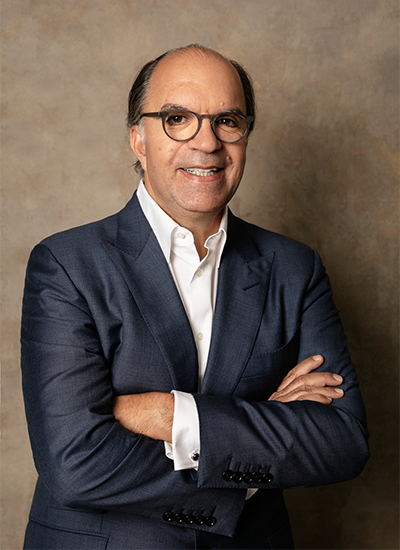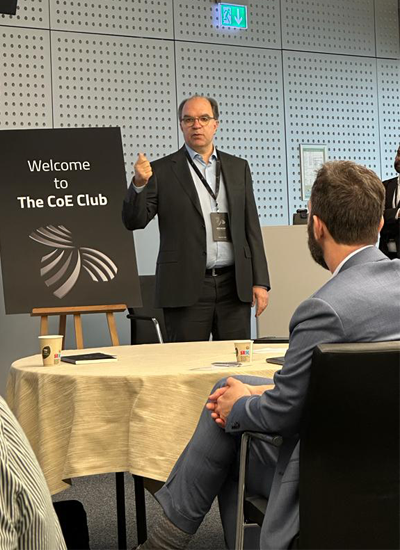
Interview: “It's crucial to link cost benchmarking with the top line” – PMI CPO


(Pic Courtesy: Philip Morris)
In the corporate finance sphere, shareholder value reigns supreme. Regardless of whether a company is publicly traded or privately held, the ultimate goal is to generate shareholder value. With this in mind, Beroe aimed to explore if procurement, as a function, can contribute to creating shareholder value for companies. Our hypothesis was that organizations investing in their procurement operations would yield higher shareholder value.
Around five years ago, Beroe began examining this premise, focusing on three primary methods for creating shareholder value: revenue growth, increasing capital efficiency, and improving operating margin. Procurement plays a pivotal role in the latter, helping enhance a company's operating margin by optimizing Cost of Goods Sold (COGS). Procurement's influence on COGS is significant, given that it usually accounts for 40-60% of a company's revenue.
Beroe identified four financial parameters where procurement plays an essential role, impacting a company's profitability: COGS as a percentage of sales, inventory as a percentage of sales, payables, and Gross Margin Return on Inventory Investment (GMROI). To measure the performance of companies based on these parameters, we analyzed the top 20 companies by revenue across 17 industries. To derive 2022 rankings, we used a rolling index, with 2018 as the base year, to evaluate each company's performance compared to its peer group.
Our findings led to the creation of the Best-in-Class (BIC) Index, a stock index that measures the price performance of the top three companies in each industry. The BIC Index consistently outperformed major benchmark indices such as the S&P 500, DAX, and FTSE 100. This demonstrates that procurement functions can, indeed, help create shareholder value.
Beroe's Best-in-Class winners for 2022 included Philip Morris International, who won the Gold Medal in the Tobacco industry.
The Beroe CoE Club event featured a panel discussion, which took place at Philip Morris' office in Neuchatel, Switzerland, with picturesque views of the beautiful Lake Neuchatel. The conversation explored the experiences and approaches of these top-performing procurement organizations.
Here are some quotes from Hafed Belhadj, who serves as the Chief Procurement Officer (CPO) at Philip Morris International.
Hello Hafed, over the past four years, what procurement enablers have been implemented in your organization in terms of technology, tools, planning, and research, helping your company become a best-in-class organization?
In my experience, successful system implementation starts with focusing on the needs of the business. Over the last three to four years, we have concentrated on making the Category Manager's life easier by carefully selecting and thoroughly vetting tools. We have implemented various tools, which have improved procurement professionals' lives and provided better access to data. Clean master data is crucial for accurate and useful analytics. Our focus is always on understanding the needs of our procurement professionals and identifying the right tools to meet those needs. We invest time in understanding the requirements rather than just focusing on tools, as systems alone don't solve problems and can sometimes create them if they aren't the right fit.
In the past four years, how has your organization emphasized cost benchmarking to remain competitive, given that you've won the Beroe Best-in-Class gold award? And how do you approach cost benchmarking within your companies?
While benchmarking is extremely important, it should not be the sole focus, especially for innovative companies that introduce unique, high-cost products. It's crucial to link cost benchmarking with the top line, as paying more for a product that generates significant revenue can be worthwhile. That said, we still conduct significant benchmarking, particularly in direct materials. By examining competitors' annual and quarterly reports, we analyse earnings, costs of goods, and other factors to understand market trends and our position relative to others. This information helps us determine if we are paying too much during challenging times, like inflation, and gives us a clearer picture of our procurement performance. Benchmarking not only helps us navigate tough times but also uncovers opportunities to reduce costs in our procurement work. It's essential to keep the bigger picture in mind and focus on meeting the needs of the team while using benchmarking as a valuable tool for comparison and improvement.
Inventory is an important metric for company profitability. Could you discuss the steps your team had taken to optimize inventory levels, addressing issues such as excess inventory and limited warehouse space?
When it comes to inventory management, it's important to view it not just as a matter of stock, but as a critical business decision. This is because inventory affects profitability. It's crucial to ensure that materials are available to protect revenue and manage risks related to cost, quality, and availability. The recent supply chain crisis has demonstrated the importance of resiliency and agility in inventory management, with companies having to manage multiple risks and disruptions simultaneously.
At our company, we are looking at inventory management as part of our overall strategy. We are assessing the right level of inventory to protect our business in the face of multiple risks and disruptions. We are exploring ways to increase resiliency and agility, such as developing multiple sources of supply and more regional sourcing. We will also need to consider the risks the business is willing to take and calculate the costs associated with increasing inventory on certain commodities.
It's worth noting that inventory management is not a one-size-fits-all solution, and it varies from company to company and even from segment to segment within a company. We are taking all of these factors into account as we assess and develop our inventory management strategy.

(Hafed Belhadj speaking at Beroe CoE Club)
Although you operate in the tobacco sector, you do buy a billion dollar worth of electronic chips that go into your new-age products. The chip shortage has affected many industries, including automotive. How did your company manage this inventory crisis?
The chip shortage began in late 2021 and affected our supply chain significantly. We had to reach out to our main suppliers to better understand the situation and manage the effects of supply shortages. Despite our best efforts, we were still met with surprises, and even our most reliable suppliers struggled to meet our demand.
To manage the situation, we had to redesign our products to work around supply chain issues. We spent a significant amount of time and resources managing the situation and working closely with suppliers to find alternative solutions. This included daily calls to track shipments, production, and allocation, as well as designing products with more flexibility to accommodate supply chain disruptions.
While it was a very challenging time, we learned that building strong relationships with suppliers is key to managing disruptions. By maintaining constant communication and being proactive in our approach, we were able to mitigate the impact of supply chain issues. In addition, we found that being persistent and keeping our suppliers informed helped us get priority treatment.
Looking back, we realize the importance of investing time and resources in building strong supplier relationships and developing agile supply chain strategies. These efforts can help companies better manage the risks associated with supply chain disruptions and increase their chances of success even in the face of adverse events.
From a strategic perspective, what plans have you implemented over the past three to four years to position your company as a best-in-class procurement organization? How have these plans helped you prepare for unforeseen challenges?
It's vital to begin with the business imperative—understanding what the business aims to achieve and organizing procurement accordingly. For example, when electronics became a significant focus, we realized we needed a team that worked with design, engineering, and R&D from the beginning, to ensure a sustainable, cost-effective, and secure supply. Making procurement professionals' lives easier by streamlining processes and responsibilities also contributes to overall efficiency. It's essential to recognize that no single model works for everyone, and we must evaluate the right model for our specific business to achieve organizational effectiveness and efficiency while meeting business goals.
Publicly listed companies often have their CFOs and CEOs participate in earnings conference calls, answering questions from the analyst community. Do you foresee a day when CPOs will be part of these calls? Given the choice, would you like to be involved in these calls and share your perspectives? What is your personal opinion on this?
While I do listen to these calls, I believe it's more important for procurement's impact to be felt, recognized, and integrated into the business rather than having a presence on the call. Each team member contributes to the company's success, and procurement is no exception. What's crucial is that procurement is seen as a valuable function and people willingly join it. Additionally, it's a good sign when procurement professionals get promoted to other business areas. For me, the recognition of procurement's contribution and unfettered access to the senior leadership team is more important than being on a call.
Related Insights:
View All
Get more stories like this
Subscirbe for more news,updates and insights from Beroe






